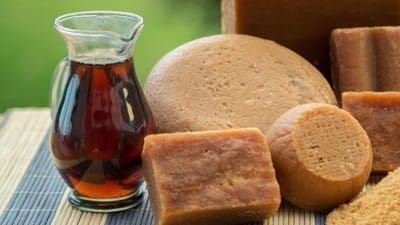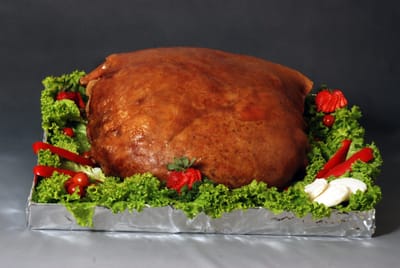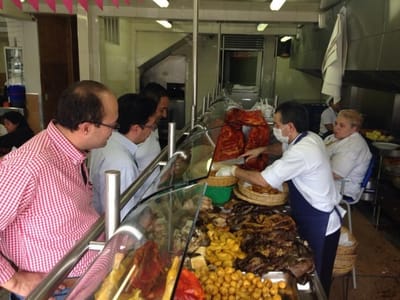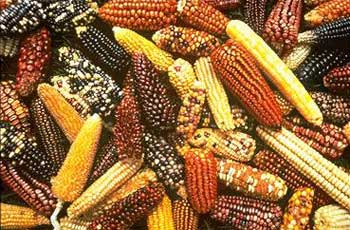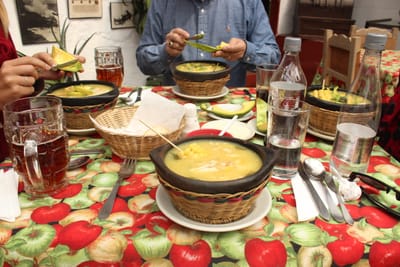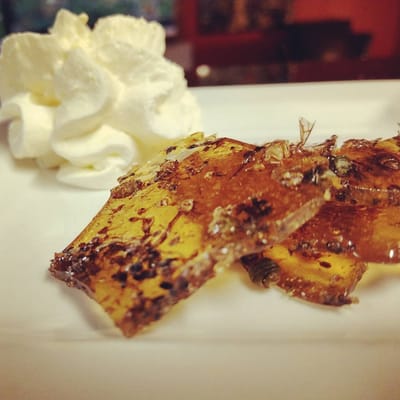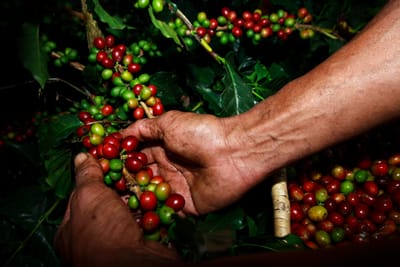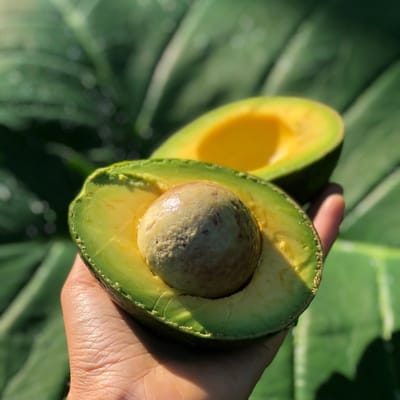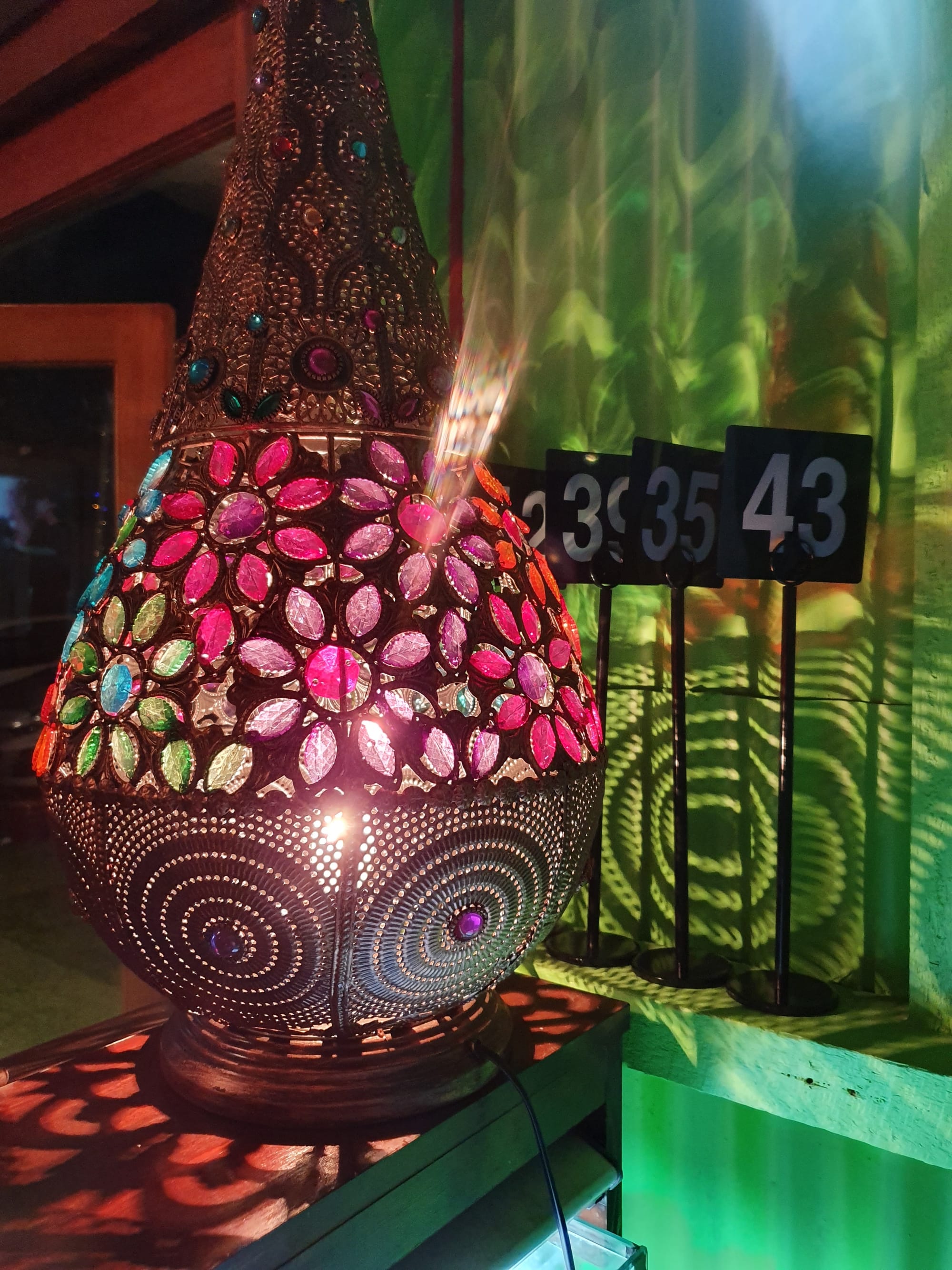Macondo
Now Closed. Happy Memories!
Muchas Gracias a Todos por los ultimos 5.5 anos. Ciao y Salud!
Awards
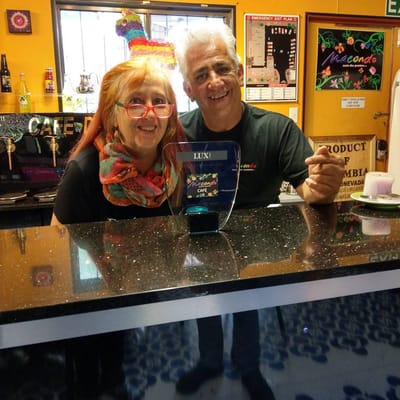
In April 2018, Phoebe Grealy in Urban List, listed Macondo as Crazy-Cool!
In August 2018, Kylie Walker from SBS Food featured our restaurant, Macondo, and its Chef, Jaime, in her focus on Arequipe Caramel - Next level Caramel
MustDo Brisbane loves Macondo! Macondo Cafe MustDo Brisbane
In 2020, Tarragindi News listed the 5 Reasons Why Macondo Cafe is Tarragindi Road's Best-Kept Secret!
In 2021, Macondo was awarded the APAC Insider 2021 Award for Best Exotic Dining Experience in Brisbane, through the Australian Enterprise Awards.
Let's talk food
Aguapanela is a popular drink on the streets of Colombia.
Read MoreHeavenly flavours!
Read MoreColombia Tour
Vicarious Travel to Locombia!
The Night of the Little Candles
La Noche de las Velitas
On this night in Colombia, people spill into the streets and light candles along windowsills, on balconies, along the streets, and each city and town turns on their Christmas lights. It truly is a night of lights!
Adventure Capital
Colombia is rich in unexplored terrain
Colombia is an enticing adventure destination. It is the only South American country with two coastlines, Pacific and Caribbean, 3000km of coastlines with excellent diving. More than 10% of the land is protected in national parks. The Sierra Nevada of Santa Marta is the highest mountain range which runs to the coast at 5700m. In the east are the low plains filled with wild rich rivers, Los Llanos and the wild jungles of the Amazon.
Tagua
Vegan Ivory
Cartagena
Cartagena de Indias
The city of Cartagena, known in the colonial era as Cartagena de Indias, is a major port founded in 1533, located on the northern coast of Colombia in the Caribbean Coast Region.
El Carnaval de Negros y Blancos
The Black and White Festival
El Carnaval de Negros y Blancos or the Blacks and Whites Carnival is the largest carnival in Colombia and is held in the southern city of Pasto. In 2009, the Carnival was proclaimed by UNESCO to be a Masterpiece of the Oral and Intangible Heritage of Humanity.
San Agustin
Parque Arqueologico de San Agustin
The San Agustín Archaeological Park (Spanish: Parque Arqueológico de San Agustín) is an archaeological site located near the town of San Agustín in Huila Department in Colombia. The site contains the largest collection of religious monuments and megalithic sculptures in Latin America and is considered the world's largest necropolis. It was declared a UNESCO World Heritage Site in 1995.
Zona Cafetera
The Coffee Zone
Colombia is famous for its smooth coffee and it is the third largest coffee growing country in the world.
Nevado del Ruiz
Volcanoes meet snowfields
The Nevado del Ruiz, or Kumanday in the language of the local pre-Columbian indigenous people, is a volcano located on the border of the departments of Caldas and Tolima in Colombia, about 129 kilometres west of the capital city Bogotá.
Tayrona
The Ultimate Caribbean National Park
The Tayrona National Natural Park (Spanish: Parque Nacional Natural Tayrona) is a protected area in the Colombian northern Caribbean region.
The Lost City
Ciudad Perdida
Ciudad Perdida (Spanish for "Lost City") is the archaeological site of an ancient city in Colombia's Sierra Nevada.
Bogota
On the Plains of Bacata
Bogota is the capital of Colombia and currently has 10 million residents.
Joropo
Dance, dance
The Joropo is a musical style resembling the fandango, and an accompanying dance.
Baile, baile!
Dance, dance!
Colombia's dance culture is impressively varied and vibrant, and very much part of Colombians' daily lives.
Museo del Oro
The Gold Museum
The Museum of Gold or El Museo del Oro is a museum located in Bogotá, Colombia. It is one of the most visited touristic highlights in the country. The museum receives around 500,000 tourists per year.
Medellin
Villa de Nuestra Señora de la Candelaria de Medellín
Medellín is the second-largest city in Colombia and the capital of the department of Antioquia. It is located in the Aburrá Valley, a central region of the Andes Mountains in South America.
Colombia bleeds
Colombia sangra
Colombia is not about drugs. Let's fight the stereotypes and learn together! Colombia has suffered 40+ years of internal conflict because westerners want to take cocaine. You will not meet a Colombian who has not suffered as a result.
Why did we close?
A little background
After six years in hospitality, I can only admire all small business hospitality owners. Their grit, their resilience, and energy in the face of considerable hardship. Hospitality is not for the faint of heart - it is hard work with small gain but the magic moments make it all worthwhile. After 18 months paying piles of money to the Brisbane City Council and going to endless meetings, we gained a material change of use on our property to have a restaurant & hospitality on-site in a light industrial zone. We built our beautiful Macondo from scratch. The hoops small business have to jump through are inordinately higher than for large business which can afford lobbyists to smooth their way. Running the restaurant was a delight. However, the trials of finding and training staff only to lose them quickly or discover they are thieves can sink the best of people. It is a story I have heard time and time again from other small business people. This isn't to say we haven't had some wonderful staff, we have. Hats off to the local high schools for helping us find such lovely staff in our final two years! Over the years, our suppliers have suffered supply chain problems, especially after natural disasters or due to poor diplomacy by our federal politicians causing trade disasters. Our suppliers, all local, were just brilliant and so resilient! The 95% of customers who are completely gorgeous were the main reason to continue during tricky times like the lockdowns for the pandemic. However, that 5% of awful clients can ruin entire weeks and leave you with a sour taste for continuing the business. Then there was the amazing support from our local communities who visited and kept coming back and put great reviews up on social media. We were happy at the end to be able to donate all of our food and drink to OzHarvest to continue their excellent work. Why did we close? Six years was enough, and the hard hard work was taking a toll on both of us, especially given that our main jobs are in road transport. We have other projects on the boil so our innovative sides can still be happy. Who knows what is next!
Why Macondo?
Colombian Nobel Laureate, Gabriel Garcia Marquez, is considered a master of magic realism in literature. His famous novel, “One Hundred Years of Solitude” or “Cien anos de soledad”, is the story of seven generations of the Buendía Family in the fictional town of Macondo, Colombia. José Arcadio Buendía, and his wife, Úrsula Iguarán leave their home to find a better life and a new home. During their journey, José Arcadio Buendía dreams of founding Macondo as a city of mirrors which reflects the world.
Read more on the novel
Excerpts from One Hundred Years of Solitude
Many years later, as he faced the firing squad, Colonel Aureliano Buendía was to remember that distant afternoon when his father took him to discover ice. At that time Macondo was a village of twenty adobe houses, built on the bank of a river of clear water that ran along a bed of polished stones, which were white and enormous, like prehistoric eggs. The world was so recent that many things lacked names, and in order to indicate them it was necessary to point. Every year during the month of March a family of ragged gypsies would set up their tents near the village, and with a great uproar of pipes and kettledrums they would display new inventions. First they brought the magnet. A heavy gypsy with an untamed beard and sparrow hands, who introduced himself as Melquíades, put on a bold public demonstration of what he himself called the eighth wonder of the learned alchemists of Macedonia. He went from house to house dragging two metal ingots and everybody was amazed to see pots, pans, tongs and braziers tumble down from their places and beams creak from the desperation of nails and screws trying to emerge, and even objects that had been lost for a long time appeared from where they had been searched for most and went dragging along in turbulent confusion behind Melquíades' magical irons. 'Things have a life of their own,' the gypsy proclaimed with a harsh accent. 'It's simply a matter of waking up their souls.'
Muchos años después, frente al pelotón de fusilamiento, el coronel Aureliano Buendía había de recordar aquella tarde remota en que su padre lo llevó a conocer el hielo. Macondo era entonces una aldea de veinte casas de barro y cañabrava construidas a la orilla de un río de aguas diáfanas que se precipitaban por un lecho de piedras pulidas, blancas y enormes como huevos prehistóricos. El mundo era tan reciente, que muchas cosas carecían de nombre, y para mencionarlas había que señalarlas con el dedo. Todos los años, por el mes de marzo, una familia de gitanos desarrapados plantaba su carpa cerca de la aldea, y con un grande alboroto de pitos y timbales daban a conocer los nuevos inventos. Primero llevaron el imán. Un gitano corpulento, de barba montaraz y manos de gorrión, que se presentó con el nombre de Melquíades, hizo una truculenta demostración pública de lo que él mismo llamaba la octava maravilla de los sabios alquimistas de Macedonia. Fue de casa en casa arrastrando dos lingotes metálicos, y todo el mundo se espantó al ver que los calderos, las pailas, las tenazas y los anafes se caían de su sitio, y las maderas crujían por la desesperación de los clavos y los tornillos tratando de desenclavarse, y aun los objetos perdidos desde hacía mucho tiempo aparecían por donde más se les había buscado, y se arrastraban en desbandada turbulenta detrás de los fierros mágicos de Melquíades. «Las cosas tienen vida propia —pregonaba el gitano con áspero acento—, todo es cuestión de despertarles el ánima».
… When her mother ordered her out of the bedroom she did not comb her hair or wash her face and she got into the train as if she were walking in her sleep, not even noticing the yellow butterflies that were still accompanying her. Fernanda never found out, nor did she take the trouble to, whether that stony silence was a determination of her will or whether she had become mute because of the impact of the tragedy. Meme barely took notice of the journey through the formerly enchanted region. She did not see the shady, endless banana groves on both sides of the tracks. She did not see the white houses of the gringos or their gardens, dried out by dust and heat, or the women in shorts and blue-striped shirts playing cards on the terraces. She did not see the oxcarts on the dusty roads loaded down with bunches of bananas. She did not see the girls diving into the transparent rivers like tarpons, leaving the passengers on the train with the bitterness of their splendid breasts, or the miserable huts of the workers all huddled together where Mauricio Babilonia’s yellow butterflies fluttered about, and in the doorways of which there were green and squalid children sitting on their pots, and pregnant women who shouted insults at the train. That fleeting vision, which had been a celebration for her when she came home from school, passed through Meme’s heart without a quiver. She did not look out of the window, not even when the burning dampness of the groves ended and the train went through a poppy-laden plain where the carbonized skeleton of the Spanish galleon still sat and then came out into the clear air alongside the frothy, dirty sea where almost a century before Jose Arcadio Buendía’s illusions had met defeat.
Cuando su madre le ordenó salir del dormitorio, no se peinó ni se lavó la cara, y subió al tren como un sonámbulo sin advertir siquiera las mariposas amarillas que seguían acompañándola. Fernanda no supo nunca, ni se tomó el trabajo de averiguarlo, si su silencio pétreo era una determinación de su voluntad, o si se había quedado muda por el impacto de la tragedia. Meme apenas se dio cuenta del viaje a través de la antigua región encantada. No vio las umbrosas e interminables plantaciones de banano a ambos lados de las líneas. No vio las casas blancas de los gringos, ni sus jardines aridecidos por el polvo y el calor, ni las mujeres con pantalones cortos y camisas de rayas azules que jugaban barajas en los pórticos. No vio las carretas de bueyes cargadas de racimos en los caminos polvorientos. No vio las doncellas que saltaban como sábalos en los ríos transparentes para dejarles a los pasajeros del tren la amargura de sus senos espléndidos, ni las barracas abigarradas y miserables de los trabajadores donde revoloteaban las mariposas amarillas de Mauricio Babilonia, y en cuyos portales había niños verdes y escuálidos sentados en sus bacinillas, y mujeres embarazadas que gritaban improperios al paso del tren. Aquella visión fugaz, que para ella era una fiesta cuando regresaba del colegio, pasó por el corazón de Meme sin despabilarlo. No miró a través de la ventanilla ni siquiera cuando se acabó la humedad ardiente de las plantaciones, y el tren pasó por la llanura de amapolas donde estaba todavía el costillar carbonizado del galeón español, y salió luego al mismo aire diáfano y al mismo mar espumoso y sucio donde casi un siglo antes fracasaron las ilusiones de José Arcadio Buendía.

